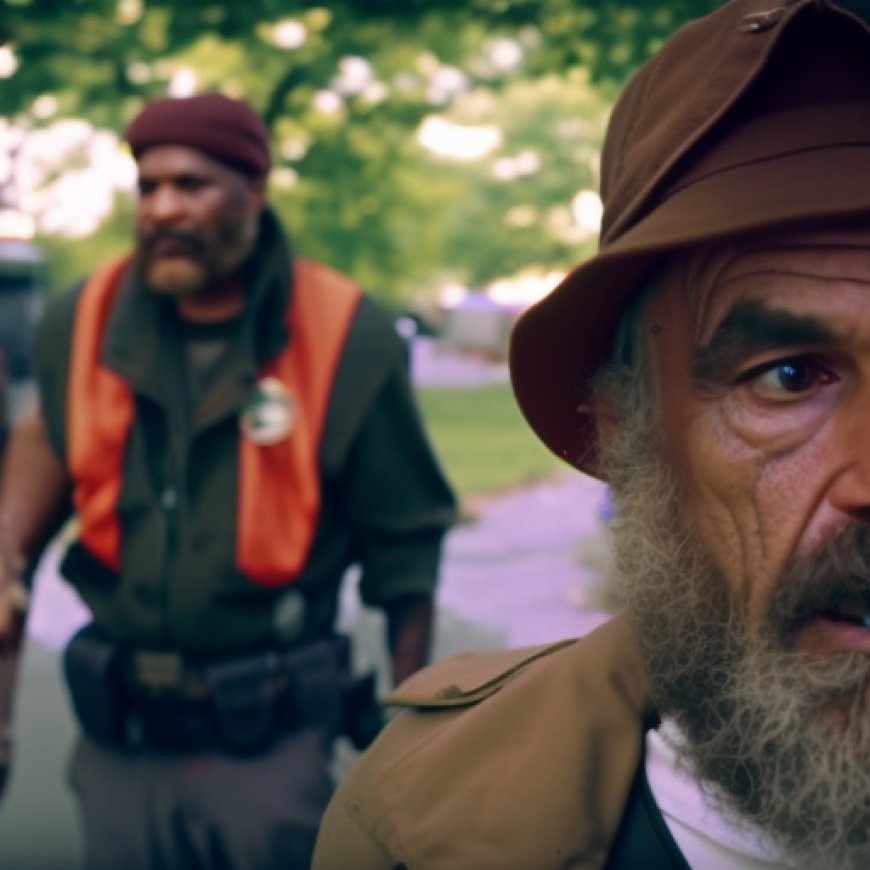Residents near south Minneapolis homeless encampment decry crime and “chaos”
Residents near south Minneapolis homeless encampment decry crime and "chaos" CBS Minnesota


Residents in Minneapolis Demand Action on Growing Homeless Encampment
MINNEAPOLIS — For the second time in less than three years, residents near East 29th Street and Fifth Avenue South in Minneapolis are living next to an encampment.
“We have so much anger behind the city allowing this to happen. We feel so wronged,” said one neighbor.
This homeowner says he did not want his face shown for fear of what would happen if the occupants of the encampment knew it was him speaking out.
Concerns and Safety Issues
“If I walk down the street, I am going to get harassed. We can’t even be outside without people like getting mad at us for looking at them walking through our alley,” he said.
He says on March 27, from inside his home, he watched as people cut the locked fence to gain access to the yard.
“As they are breaking in, more of us are calling the cops and more and more of them are showing up, it happened so fast. They are pulling cars up, they are pulling trailers up, they are unloading everything,” he said.
He says many in his neighborhood do not feel safe.
“I’m looking outside and I got people sitting on their blankets, shooting drugs on the other side of my alley. We just had a homicide, right? They’ve only been here for two weeks but it’s back to the same thing that it was,” the neighbor said.
Previous Incidents
The body of a 24-year-old man was found near the encampment on April 8.
In 2021, another encampment went up in the same area. According to 911 records, there were more than 2,800 calls for service to that area from July through December. Officers responded to reports of shots fired, damage to property, assaults and drug activity.
“But now, them allowing our block to go back through the same thing that we had gone through is a complete injustice to our neighborhood,” he said.
In just the last five weeks, there have been seven disturbance calls, three stabbings, one explosion, two ShotSpotter activations and one murder on that block.
Community Action
Neighbors came together to present a letter to city leaders describing what they call “the chaos” in their community.
“We are again struggling with drug dealers doing business so close to our homes and harassing our kids,” the letter read, in part.
They want the city to take action immediately for their survival.
“If you were to talk to other homeowners, they’ve got bullet holes in their houses,” he said.
City Response
The city of Minneapolis sent a statement saying it is working to close the encampment on 5th Avenue South:
Closure is likely to take place next week and the city will provide one week advance notice prior to closure. Outreach workers continue working on connecting community members at the encampment with available services from Hennepin County and other community partners. These resources include shelters, housing, mental health, and addiction services.
The city continues to balance the needs of encampment residents with those of nearby residents and businesses when considering its response.
More from CBS News
SDGs, Targets, and Indicators
1. Which SDGs are addressed or connected to the issues highlighted in the article?
- SDG 1: No Poverty
- SDG 3: Good Health and Well-being
- SDG 11: Sustainable Cities and Communities
- SDG 16: Peace, Justice, and Strong Institutions
2. What specific targets under those SDGs can be identified based on the article’s content?
- Target 1.1: By 2030, eradicate extreme poverty for all people everywhere.
- Target 3.4: By 2030, reduce by one-third premature mortality from non-communicable diseases through prevention and treatment and promote mental health and well-being.
- Target 11.1: By 2030, ensure access for all to adequate, safe and affordable housing and basic services and upgrade slums.
- Target 16.1: Significantly reduce all forms of violence and related death rates everywhere.
3. Are there any indicators mentioned or implied in the article that can be used to measure progress towards the identified targets?
- Indicator for Target 1.1: Proportion of population living below the national poverty line.
- Indicator for Target 3.4: Mortality rate attributed to non-communicable diseases.
- Indicator for Target 11.1: Proportion of urban population living in slums, informal settlements, or inadequate housing.
- Indicator for Target 16.1: Number of victims of intentional homicide per 100,000 population, by sex and age.
Table: SDGs, Targets, and Indicators
| SDGs | Targets | Indicators |
|---|---|---|
| SDG 1: No Poverty | Target 1.1: By 2030, eradicate extreme poverty for all people everywhere. | Proportion of population living below the national poverty line. |
| SDG 3: Good Health and Well-being | Target 3.4: By 2030, reduce by one-third premature mortality from non-communicable diseases through prevention and treatment and promote mental health and well-being. | Mortality rate attributed to non-communicable diseases. |
| SDG 11: Sustainable Cities and Communities | Target 11.1: By 2030, ensure access for all to adequate, safe and affordable housing and basic services and upgrade slums. | Proportion of urban population living in slums, informal settlements, or inadequate housing. |
| SDG 16: Peace, Justice, and Strong Institutions | Target 16.1: Significantly reduce all forms of violence and related death rates everywhere. | Number of victims of intentional homicide per 100,000 population, by sex and age. |
Based on the article, the issues highlighted are connected to multiple SDGs. SDG 1 (No Poverty) is relevant because the encampment and its associated problems indicate a lack of access to adequate housing and basic services, which can contribute to poverty. SDG 3 (Good Health and Well-being) is relevant because the presence of drug activity, violence, and other disturbances in the encampment area can negatively impact the health and well-being of both the encampment residents and the neighboring community. SDG 11 (Sustainable Cities and Communities) is relevant because the encampment and its associated issues highlight the need for access to safe and affordable housing, as well as the upgrading of slums and informal settlements. SDG 16 (Peace, Justice, and Strong Institutions) is relevant because the presence of crime, violence, and harassment in the encampment area indicates a need for stronger institutions and measures to reduce violence.
The specific targets identified based on the article’s content are Target 1.1 (eradicating extreme poverty), Target 3.4 (reducing premature mortality from non-communicable diseases), Target 11.1 (ensuring access to adequate housing and upgrading slums), and Target 16.1 (reducing violence and related death rates).
The article mentions or implies several indicators that can be used to measure progress towards the identified targets. The proportion of population living below the national poverty line can be used as an indicator for Target 1.1. The mortality rate attributed to non-communicable diseases can be used as an indicator for Target 3.4. The proportion of urban population living in slums, informal settlements, or inadequate housing can be used as an indicator for Target 11.1. The number of victims of intentional homicide per 100,000 population, by sex and age, can be used as an indicator for Target 16.1.
Behold! This splendid article springs forth from the wellspring of knowledge, shaped by a wondrous proprietary AI technology that delved into a vast ocean of data, illuminating the path towards the Sustainable Development Goals. Remember that all rights are reserved by SDG Investors LLC, empowering us to champion progress together.
Source: cbsnews.com

Join us, as fellow seekers of change, on a transformative journey at https://sdgtalks.ai/welcome, where you can become a member and actively contribute to shaping a brighter future.







